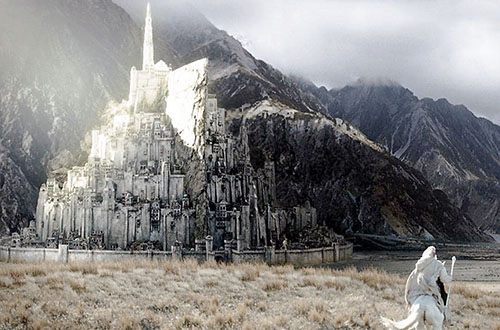Featured Author
 Scribe
Scribe
Aldarion submitted a new blog post:
Fantasy Fortifications — Part 2: Technology and Materials
This article is part 2 of a series on Fantasy Fortifications by Toni Šušnjar.

This section, being technical, depends a lot on the nature of the fantasy in question. Is it low or high fantasy? How widespread is magic? Are there any fantastical/magical materials present? Can magic be used to reinforce buildings. Good examples of magical-yet-not-obviously-so fortifications are Helm's Deep (Aglarond) and Minas Tirith from Lord of the Rings. Both Aglarond fortress and main wall of Minas Tirith had been built using magic – yet that magic takes the form of really advanced technology, and provides obviously fantastical fortifications without obviously breaking any laws of physics (Angrenost/Orthanc and Barad-dur are more obviously fantastical).
Both building and siege technology is important aspect in designing walls. When it comes to siege technology, it can take various forms. But primary difference is lack or presence of stone-throwing weapons (catapults / onagers, ballistas, trebuchets) and their technological advancement, and lack or presence of gunpowder weapons.
When it comes to materials however, another factor is their presence or absence. Where there is stone available, crude stone fortifications may appear long before they are technically necessary. Where there is none, fortifications will be built out of other...
Continue reading the Original Blog Post.
Fantasy Fortifications — Part 2: Technology and Materials
This article is part 2 of a series on Fantasy Fortifications by Toni Šušnjar.

This section, being technical, depends a lot on the nature of the fantasy in question. Is it low or high fantasy? How widespread is magic? Are there any fantastical/magical materials present? Can magic be used to reinforce buildings. Good examples of magical-yet-not-obviously-so fortifications are Helm's Deep (Aglarond) and Minas Tirith from Lord of the Rings. Both Aglarond fortress and main wall of Minas Tirith had been built using magic – yet that magic takes the form of really advanced technology, and provides obviously fantastical fortifications without obviously breaking any laws of physics (Angrenost/Orthanc and Barad-dur are more obviously fantastical).
Both building and siege technology is important aspect in designing walls. When it comes to siege technology, it can take various forms. But primary difference is lack or presence of stone-throwing weapons (catapults / onagers, ballistas, trebuchets) and their technological advancement, and lack or presence of gunpowder weapons.
When it comes to materials however, another factor is their presence or absence. Where there is stone available, crude stone fortifications may appear long before they are technically necessary. Where there is none, fortifications will be built out of other...
Continue reading the Original Blog Post.


 Archmage
Archmage